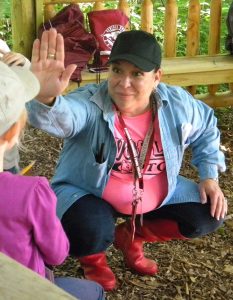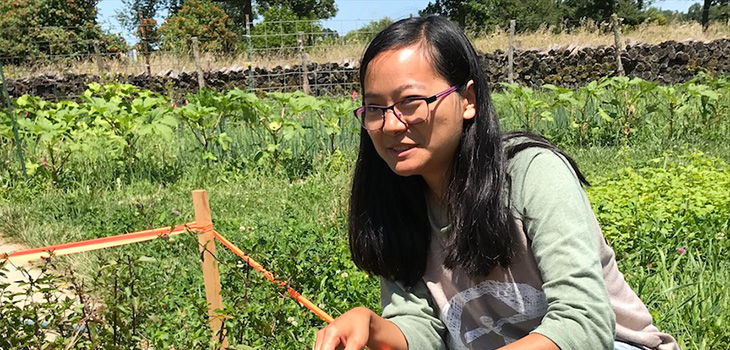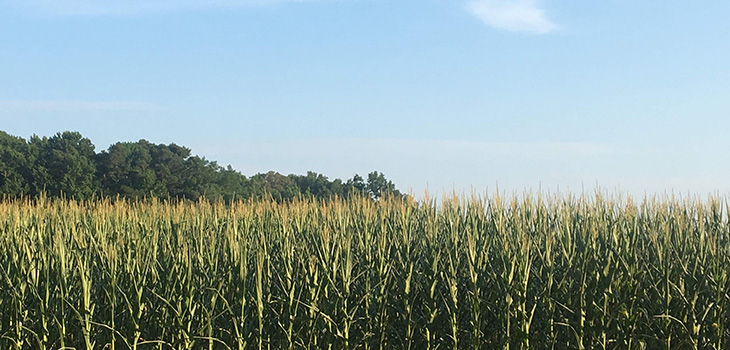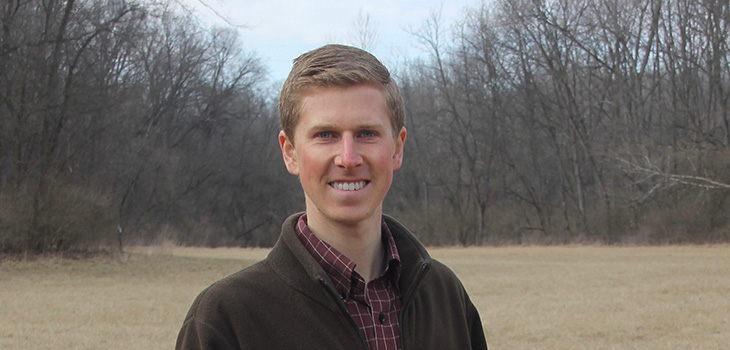 Jodi Jordan, a kindergarden teacher at Wolf Lake Elementary School is prepared to spend time in the woods. Maybe even roll in the mud. She’s been through several days of Kinderforest training and practice at Merry Lea, she’s got her Frog Toggs® and she’s got a boatload of enthusiasm.
Jodi Jordan, a kindergarden teacher at Wolf Lake Elementary School is prepared to spend time in the woods. Maybe even roll in the mud. She’s been through several days of Kinderforest training and practice at Merry Lea, she’s got her Frog Toggs® and she’s got a boatload of enthusiasm.
“I can’t say enough good things about this program!” Jodie says. “The children are different people in the woods. Shy children will begin to take risks—stepping in the mud, climbing up a log—and restless children can be more focused.”
Kinderforest is a European model of education for young children that stresses immersion in nature and lots of free play. In an era when many children don’t even get to go outside for recess, children in forest schools spend every day, all day outside with their teachers. In Wolf Lake’s pilot program, the kindergardeners will spend a full day each month in the woods at Merry Lea.
Over the years, Merry Lea’s environmental educators built a relationship with Wolf Lake Elementary, which is just a mile or two away. Fifth graders came for field trips several times a year at one point, and Merry Lea’s Tom Hartzell organizes PROWL, an after-school nature program for Wolf Lake students that runs several weeks a year. This time, the initiative came from Wolf Lake Principal Robbie Morgan who encountered the kinderforest idea at a conference. And much of the leadership will come from Wolf Lake teachers.
“That’s the most exciting piece for me—watching teachers embrace the outdoors and develop as environmental educators,” says Marcos Stoltzfus, director of the Environmental Education Outreach Team at Merry Lea.
Merry Lea’s educators need to adjust to a different role on kinderforest days as well. For one thing, they are not the ones planning all the activities; instead they work in partnership with the teachers who may at some point take over. Kinderforest is also unstructured compared to Merry Lea’s other school programs. Educators have less need to watch the clock and keep groups on schedule. The pedagogy is inquiry-based, beginning with questions and problems rather than facts and answers.
One practice the kindergardeners will know well by the end of the year is observation at a “sit spot.” Children spent several minutes alone with their notebooks just observing their surroundings and jotting or drawing what they sensed. One boy staked out a spot on a bridge and devoted himself to the millipedes crawling across it. Scrunched over his notebook, attempting to trace the way they curl up when frightened, he looked every inch a scholar.



